0
Diamond Grading Chart
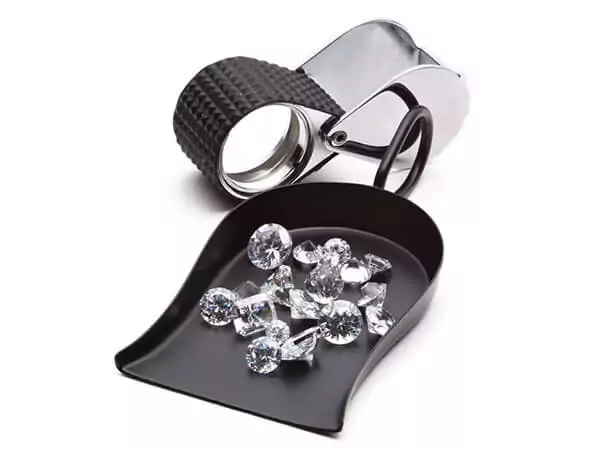
Carat
The weight of a diamond is measured in carats.
One carat = 0.2 grams and one carat equals 100 points. i.e 1/2 carat = 0.50 points, 1/4 carat = 0.25 points

Clarity
All diamonds have traces of their growth history. In gem-quality diamonds, this usually means minute internal and external characteristics.
The clarity scale reflects the size, number, location and visibility of the characteristics when examined with a loupe under x10 magnification. The very best - and rarest - clarity is internally flawless. Most inclusions are not visible to the naked eye. Diamonds that have no inclusions visible to the unaided eye are usually more valuable.

Colour
Most diamonds are colourless to slightly yellowish. The colour grade is determined by comparison with a series of masterstones, the best grade being colourless D.
Diamonds can also occur in all sorts of colours, ranging from brownish to striking yellows, pink to purple, red and blue. These are called “fancy colours”.

Cut
The proportions of a diamond determine the brilliance and the fire of the diamond. The symmetry describes the
variations of the different parameters which define the proportions. The polish describes the finish of the facets.
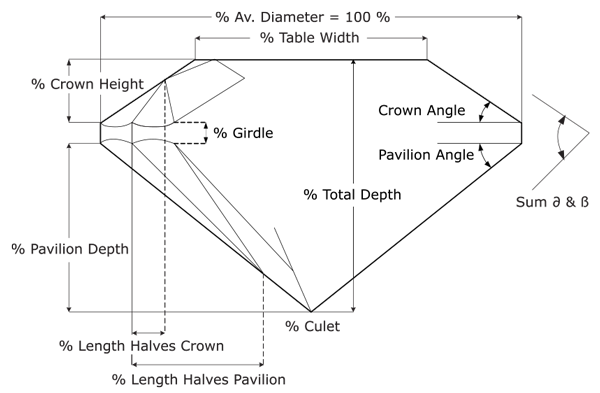
Shape
Diamonds can be cut in various shapes (e.g. princess, pear or heart). The round brilliant is probably the best known shape.
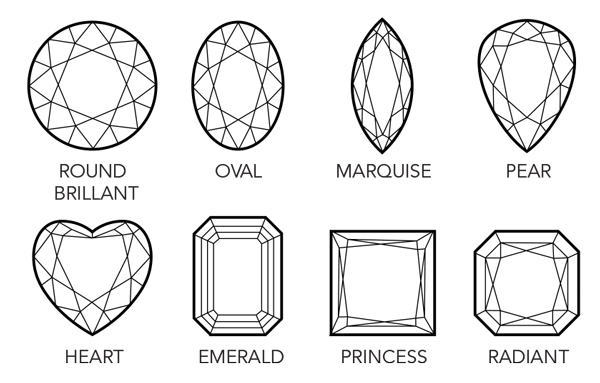
Pearl Guide
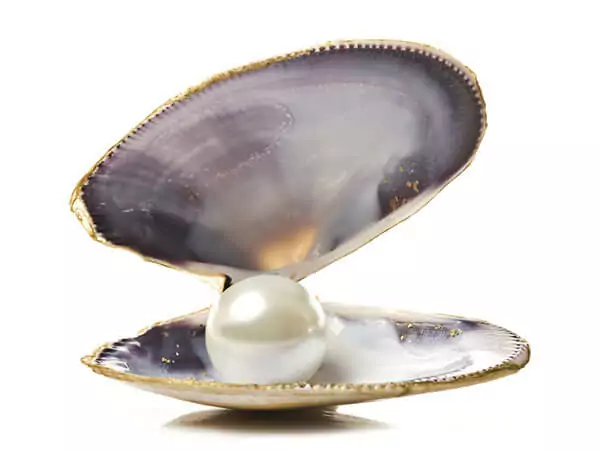
Cultured Pearls
Cultured pearls come from seawater oysters, giant clams and giant conches.
They are formed when a mother of pearl bead is introduced into the oyster. This causes an irritation to the oyster and it coats the surface of the bead with nacre, a natural substance of calcium carbonate which crystallises into aragonite.
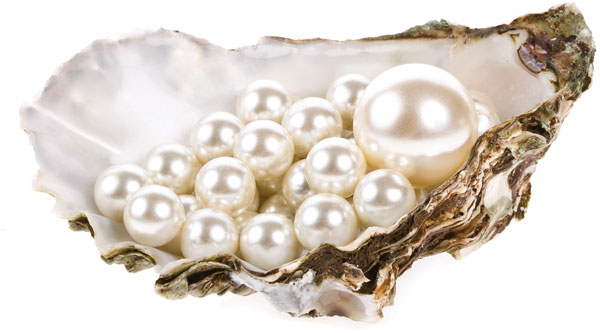
There are three main types of cultured pearl:
AKOYA PEARLS are the classic white pearl necklace we think of and typically have the highest lustre and greatest shine of all cultured pearls. Akoya pearls may also be treated to achieve a black body colour.
TAHITIAN PEARLS come from the warm waters of the South Seas and are grown in a BlackLipped oyster. They are the only pearl to achieve a black body colour naturally and are typically very large (9mm - 16mm). Tahitian Pearls are produced in colours such as aubergine purple, peacock green and greyish blue. These oysters can grow as large as 30cm and can weigh up to five kilograms.
SOUTH SEA PEARLS come from the world’s largest oysters and the colours are typically silver, white and golden yellow. These are farmed in Australia, Indonesia and the Philippines.
Freshwater Pearls
Created by the Chinese, the Japanese later developed the industry in the late 1890s. Freshwater pearls are generally produced by mussels, and are cultivated in Japan, China and the USA.
Freshwater pearls come in various pastel shades of white, black, pink, peach, lavender, plum, purple, and tangerine, depending on the type of mussel.
The typical size of freshwater pearls is 2mm - 16mm with 7mm - 8mm being the most common. They come in a variety of shapes including teardrop and oval.
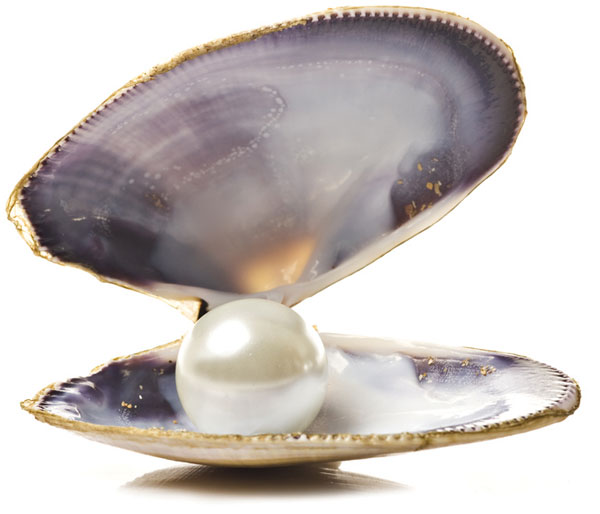
Freshwater pearls are normally farmed in larger numbers, as the mussels are able to produce a greater number of pearls than the cultured pearl oysters.
The freshwater pearl will normally look irregular in comparison to the cultured pearl which looks more spherical in shape.
Caring & Looking After Pearls
Once you have chosen your pearls, you will naturally want to look after them so that they give you years of pleasure.
Here are our pearls of wisdom to ensure that your pearls remain safe and bright for years to come.
Things you can do with your pearls...
• Keep them clean and free from make up residue. Wipe your pearls with a soft, lint free cloth, a handkerchief for example. This will remove any acidic or alkaline influence on the pearls and will prevent surface damage.
• Keep them in a jewellery box or jewellery roll, out of direct sunlight when they are not being worn. Keep the pearls in separate compartments away from other jewellery, which could scratch the surface of your pearls.
• Have your pearls rethreaded regularly. Most pearls are threaded onto silk which will loosen over time.
Things we advise against with your pearls...
• Avoid spraying perfume or hairspray directly onto your pearls. Most perfumes contain alcohol which attacks the fragile surface of the pearl. Unlike gemstones, pearls can’t be polished, so once they are damaged there is nothing that can be done to restore their lustre.
• Avoid going swimming in your pearls. Chlorine in pools and jacuzzi’s can damage your pearls beyond repair.
Pearls - Nature’s Precious Gift
Pearls are the queen of gems, formed in shellfish, they are the most important of the ‘organic’ gem materials. Pearls even once reigned supreme over diamonds during the Edwardian period.
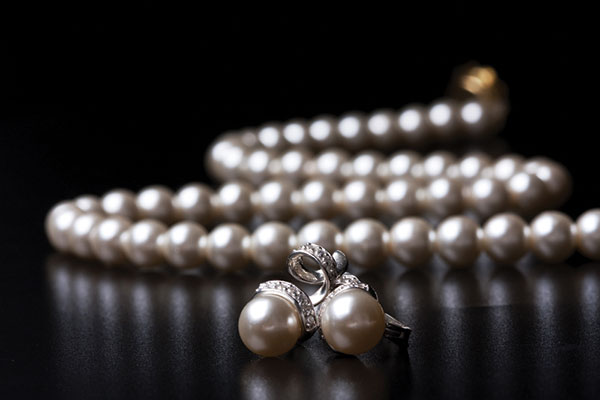
The finest quality natural pearls have been highly valued as objects of beauty for many centuries.
Pearls are traditionally associated with innocence but they are also perhaps the most sensual of
gems; they have been said to be the ‘tears of the gods’ !
Pearls vary in colour from subtle shades such as white, pink, silver, yellow, green, gold and bronze depending on the type of shellfish and the water.
A spherical pearl is the ideal, baroque or irregularly shaped pearls are also used for the more unusual pieces. Lustre, colour, shape and clarity are the considerations which determine the quality and value of a pearl.
Pearls are the birthstone for June and the traditional gift for 30th birthdays and other 30th anniversaries.
Pre-Owned Rolex Operating Instructions
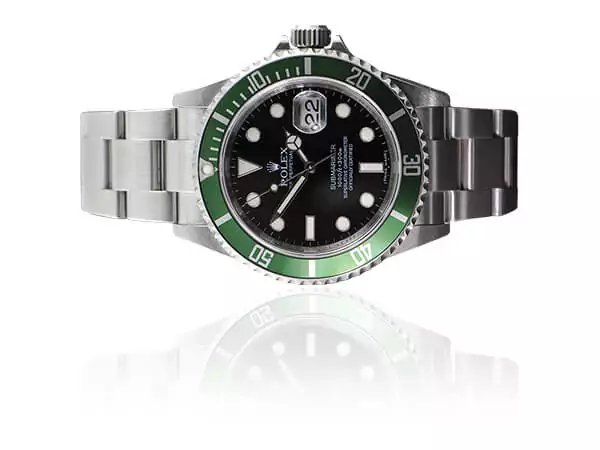
Instructions For Setting The Date And Time On Your Rolex Perpetual Chronometer
Step I
This shows the normal position of the crown.
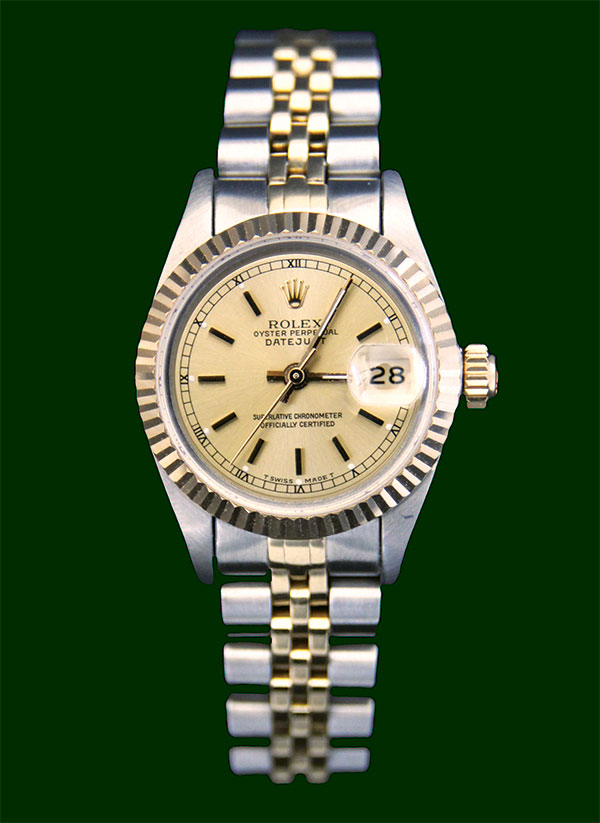
Check that the crown and case are free of any dirt or grease before unscrewing the crown, as this could enter the watch during the date and time changing sequence.
Step II
While the watch is not on your wrist, unscrew the crown until you feel it come off the screw thread. You usually hear a slight ‘pop’ as the crown comes off the screw thread.
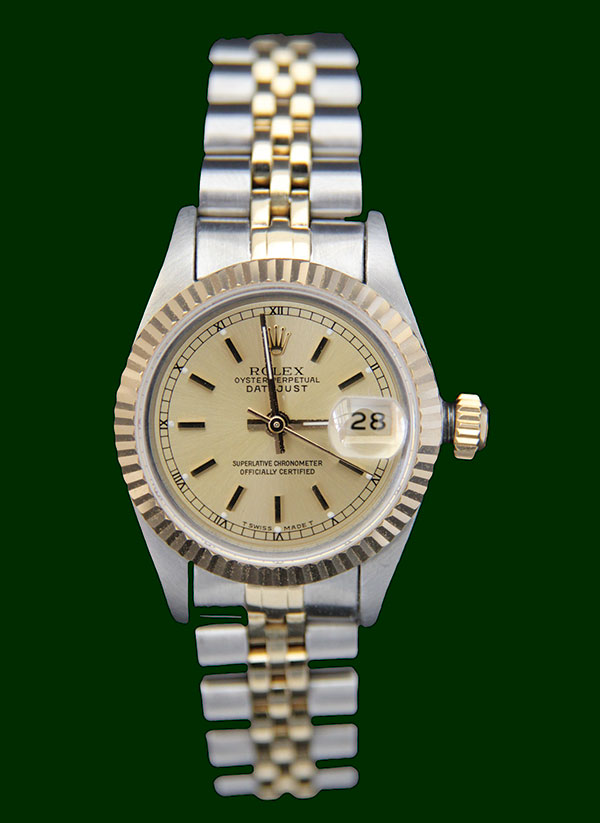
At this position you can manually wind your watch.
Manually winding the watch crown back and forth approximately forty times will give the mechanism enough power to run for at least 24 hours.
Step III
Pulling out the crown to the first position of two enables the date to be changed.
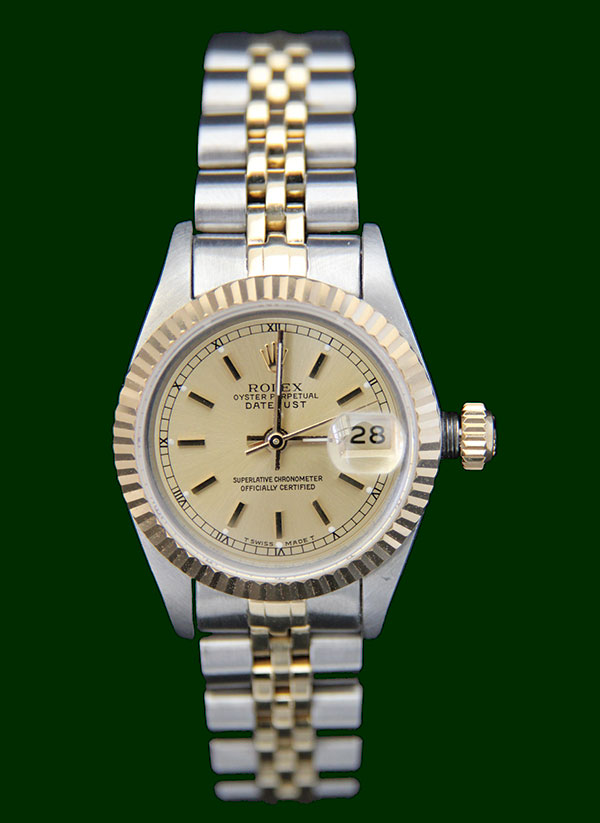
Depending on the model of watch you normally wind the crown towards you (anticlockwise) to change the date.
Set the date to the day before today. This will enable you to manually wind the hands forward (shown in step 4) so that the date is correct.
Step IV
Pulling out the crown to the second position of two allows you to change the minute and hour hand until you reach the correct time.
The crown is now a considerable distance from the case.
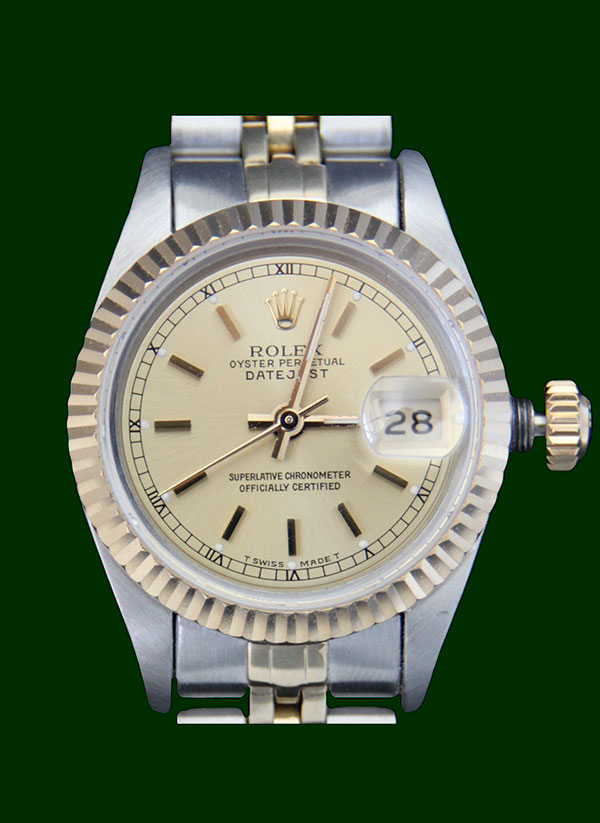
You should always take care when winding or changing the time or date not forcing the stem at any time.
Step V
Once the time and date have been changed, slowly push the crown back to the start position and gently offer the crown onto the screw thread of the case (clockwise).
Screw and push the crown at the same time to enable the crown to return to the normal position and ensure the water resistance.
Forcing the crown at this stage could damage your watch causing it to ‘cross thread’, so take your time.
Your Automatic Rolex
We have compiled this leaflet to assist you with the operation of your automatic watch.
We hope you find this leaflet useful, but if you have any further questions, please don’t hesitate to contact one of our branches for more help or advice.
Automatic watches require the owner to wear the watch for at least six continuous hours a day, as the watch mechanism gains power from the movement of your wrist. The oscillating weight inside your watch spins around within the case and winds the mainspring.
Manually winding the watch crown back and forth forty times as shown on the pages inside, this guide will give the watch the manual wind it needs to start running if you have not worn your watch for sometime.
It is commonly thought that merely shaking the watch from side to side is sufficient to start the watch running. It will start the watch, but it will not run for long.
If you are only going to wear your Rolex watch occasionally, we suggest you purchase a watch winder box to keep your watch running, when not being worn.
Opal Guide
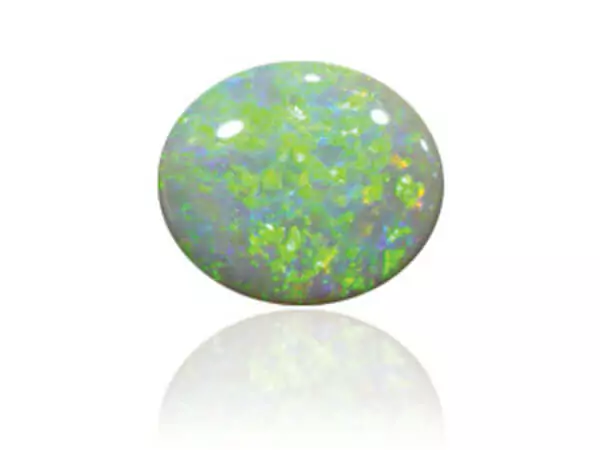
The Appearance & Characteristics Of Your Opal
The history of Australian Opal began millions of years ago, when parts of Australia were covered
by a vast inland sea where stone sediment was deposited along its shoreline.

When the water masses flooded back, they flushed water containing silica into the resulting
cavities and niches in the sedimentary rocks, where the remains of plants were also deposited.
Slowly the silica transformed into Opal. Basically, Opals are simply a combination of silica and
water.
Opalescence
One of the unique characteristics of the stone is its opalescence. The stone has a rainbow like
iridescence that changes according to the angle of observation.
The stone possesses the ability to reflect and refract particular wavelengths of light.
This play of color really makes opals come alive. There are some beautiful gemstones in the world
but the opal has the unique characteristic of being able to change colors as it is moved.
Opals Have A Dominant Colour
Opals usually have a dominant theme colour. Some stick to variations of that theme.
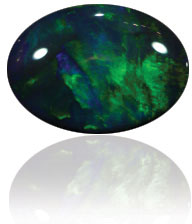
Others feature a dominant color such as red or green, but then offer multiples of other colours in
contrast such as yellow, pink and crimson.
The background darkness or lightness gives the different types of opal their distinct appearance.
Types Of Opal
Australian opals can come in many different varieties, such as black, white, boulder, crystal &
common opals.
The most expensive and prized variety are black opals. They contain streaks of fire on a dark body
colour.
The white opal is opaque meaning that the opal colour is on the surface of the stone rather
than being translucent. The fire opal originates from Mexico where only 5% of the world’s opals
originate.
It is usually orange, red or yellow in color but most fire opals do not have a change of colour.
Other Mexican opals do have a colour change similar to opals from Andamooka; these are
transparent and show brilliant flashes of colour.
Mythology Surrounding Opals
This delightful legend is said to be the birth of Opal, which can be traced to the ancient time of
the original Australian Aborigines.
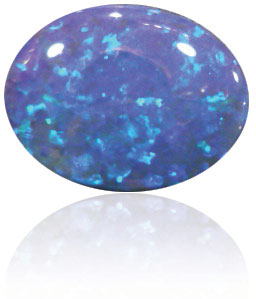
It is reported in their legend that the creator came down to Earth on a rainbow, in order to bring
the message of peace to all humans.
At the very spot where his foot touched the ground, the stones came alive and started sparkling in
all the colours of the rainbow.
A massive 95% of the worlds Opals come from Australia.
Caring For Your Opal Jewellery
Opals are delicate, and have a Moh’s scale hardness of approximately 6.5. They need to be worn
and handled with great care. They have a water content which is typically between 3% and 20%.
If an opal is allowed to dry, it will crack or craze. In most cases, Opals should be stored separately
in a jewellery box and should be kept away from other gemstone rings which could cause
scratching.
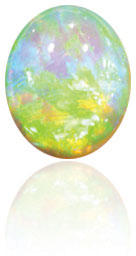
Opals don’t mind being hot or cold, it is sudden temperature changes that can damage them.
Never store opals near a heat source. Keep them out of direct sunlight when they are not being
worn.
Always remove your Opal jewellery when doing any household chores, including gardening, as
you could know the Opal accidentally and damage the stone.
Don’t bathe or swim in Opals and never clean any opal in an ultrasonic cleaner. This will cause
cracking in a solid opal or and water damage to a doublet or triplet opal.
If you are unsure about how to care for your opal, or if you have any questions, call into one of
our showrooms for further advice.
